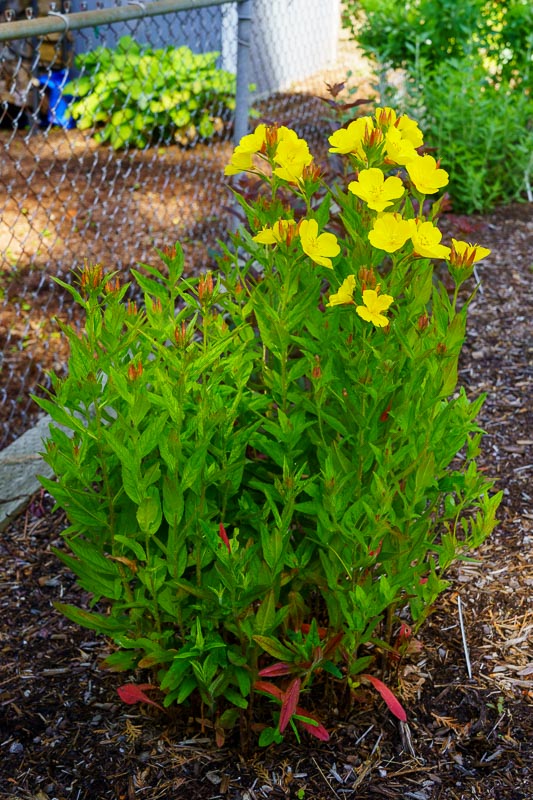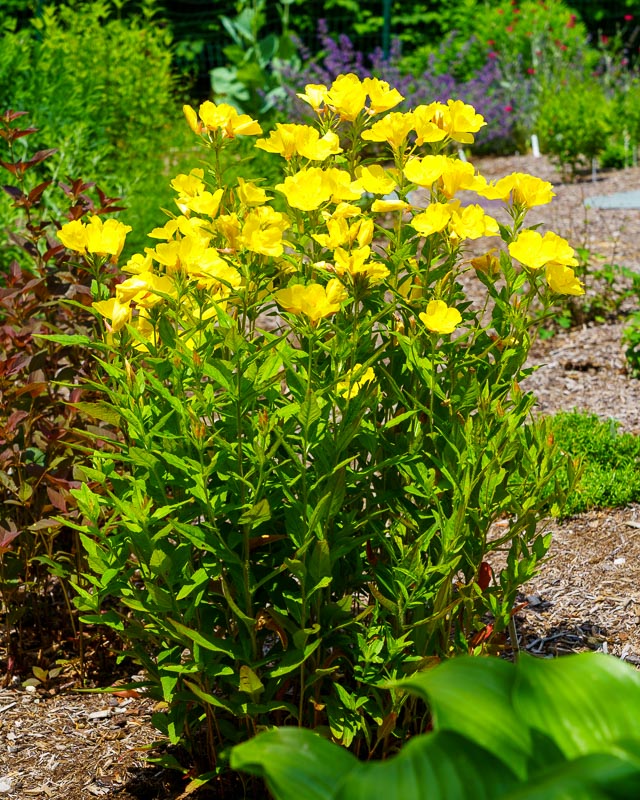| Common Name | Yellow Evening Primrose |
| Botanical Name | Oenothera biennis |
| Mature Size | 3–5 ft. tall, 2–3 ft. wide |
| Sun Exposure | Full sun, partial shade |
| Soil Type | Moist but well-drained |
| Soil pH | Neutral to acidic |
| Bloom Time | Summer, early fall |
| Flower Color | Yellow |
| Care | If the invasive nature of evening primrose doesn't deter you (not to mention that you'll be asleep while its beautiful blooms are out), then you're in luck, because even the most novice gardeners can grow this herbaceous perennial. As long as you give it plenty of light and well-draining soil, chances are your evening primrose plants will be more than happy. |
| Soil | Another major requirement for growing evening primrose successfully is soil that boasts good drainage. That being said, it should still retain moisture, just not become water-logged. Consider adding a thick layer of mulch atop the soil to help keep the roots cool throughout the summer. |
| Water | Evening primrose does best with adequate regular watering and will need a bit more water if grown in an especially hot climate during the summer. However, if you notice any discoloration or browning on the plant's many leaves, that's a sure sign that your evening primrose is getting too much water and is likely suffering from root rot or a fungal disease. |
| Temperature and Humidity | While it blooms and grows best during the summer, evening primrose actually prefers to be cool rather than warm. The plant needs to get established (i.e. grow its roots and foliage) during the cooler early months of spring in order to flower well come summer. Too much heat early on in its life can cause the plant to become leggy or resemble a weed in appearance. |
| Fertilizer | Fertilizer is not a necessary addition to your evening primrose care regimen—it will grow just fine without the additional nutrients. However, if you are working with particularly bad soil, you can amend your mixture with some organic material. |
| Pruning | Mom - “it does become invasive only if you are not willing to nip it in the bud and remove runners as they appear. Decide on the outside perimeter you want and then remove all that stray outside. lBe sure the cut back stems well after blooming so it doesn't go to seed or toss seed heads behind fence and let them grow wild.” |
| Source | https://www.thespruce.com/evening-primrose-plant-profile-4774593 |



